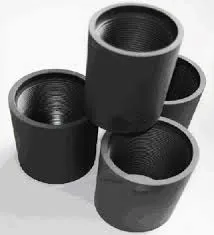- Afrikaans
- Albanian
- Amharic
- Arabic
- Armenian
- Azerbaijani
- Basque
- Belarusian
- Bengali
- Bosnian
- Bulgarian
- Catalan
- Cebuano
- Corsican
- Croatian
- Czech
- Danish
- Dutch
- English
- Esperanto
- Estonian
- Finnish
- French
- Frisian
- Galician
- Georgian
- German
- Greek
- Gujarati
- Haitian Creole
- hausa
- hawaiian
- Hebrew
- Hindi
- Miao
- Hungarian
- Icelandic
- igbo
- Indonesian
- irish
- Italian
- Japanese
- Javanese
- Kannada
- kazakh
- Khmer
- Rwandese
- Korean
- Kurdish
- Kyrgyz
- Lao
- Latin
- Latvian
- Lithuanian
- Luxembourgish
- Macedonian
- Malgashi
- Malay
- Malayalam
- Maltese
- Maori
- Marathi
- Mongolian
- Myanmar
- Nepali
- Norwegian
- Norwegian
- Occitan
- Pashto
- Persian
- Polish
- Portuguese
- Punjabi
- Romanian
- Russian
- Samoan
- Scottish Gaelic
- Serbian
- Sesotho
- Shona
- Sindhi
- Sinhala
- Slovak
- Slovenian
- Somali
- Spanish
- Sundanese
- Swahili
- Swedish
- Tagalog
- Tajik
- Tamil
- Tatar
- Telugu
- Thai
- Turkish
- Turkmen
- Ukrainian
- Urdu
- Uighur
- Uzbek
- Vietnamese
- Welsh
- Bantu
- Yiddish
- Yoruba
- Zulu
Understanding the Distinctions Between Casing and Tubing in Oil and Gas Operations
Differences Between Casing and Tubing in Oil and Gas Operations
In the oil and gas industry, the terms casing and tubing are fundamental to the drilling and production processes. While both are crucial for the successful extraction of hydrocarbons, they serve distinct purposes and have different characteristics.
Definition and Purpose
Casing is a series of steel pipes that are inserted into a drilled well to provide structural integrity. Its primary role is to support the walls of the wellbore, preventing collapse and protecting the well from external contaminants. By isolating the various layers of rock and fluids, casing ensures that the hydrocarbon reservoirs are accessed safely and efficiently. It also serves to protect freshwater aquifers from potential contamination by the fluids extracted from underground.
On the other hand, tubing refers to the pipes installed within the casing that facilitate the flow of hydrocarbons to the surface. Tubing allows for the safe and efficient transportation of oil or gas extracted from the reservoir to the surface processing facilities. Unlike casing, tubing is designed to carry production fluids under pressure and is typically smaller in diameter than the casing.
Manufacturing and Material Differences
Casing and tubing differ significantly in their specifications and manufacturing processes. Casing pipes are usually thicker and stronger than tubing, as they must withstand high pressures exerted by the surrounding rock formations and prevent the wellbore from collapsing. Casing is commonly manufactured in various grades, depending on the depth of the well and the types of formations penetrated.
what are the differences between casing and tubing?

In contrast, tubing is manufactured to more precise specifications to ensure an optimal flow rate of hydrocarbons. The material used for tubing is often subjected to various forms of testing to ensure its strength and durability under operational conditions. Tubing comes in different sizes and weights, tailored to meet the specific needs of the production process.
Installation Processes
The installation processes for casing and tubing also differ considerably. During drilling, casing is installed right after the wellbore is drilled to a certain depth, usually in sections. Each section is run into the well, and cement is pumped into the annulus (the space between the casing and the wellbore) to secure the casing in place and provide additional support. This process creates an impermeable seal that separates different formations and ensures the integrity of the wellbore.
Once casing is installed, tubing is then run through the casing in the production phase. This involves lowering the tubing string into the wellbore. The top of the tubing is connected to surface equipment that facilitates the flow of hydrocarbons to the surface. The tubing string is designed to be easily replaced or maintained, allowing for ongoing production without the need to remove the casing.
Regulatory and Safety Considerations
Both casing and tubing play essential roles in ensuring the safety and compliance of oil and gas operations. Regulatory agencies often set stringent standards for casing to ensure that wells are constructed safely and that the risk of leaks or environmental contamination is minimized. Similarly, tubing must meet specific safety standards to ensure that it can withstand the pressures and corrosive environments encountered during production.
In summary, while casing and tubing are both integral to oil and gas production, they have distinct functions, manufacturing processes, installation techniques, and regulatory considerations. Understanding these differences is essential for professionals in the industry to ensure efficient and safe extraction of hydrocarbons. Proper management of both casing and tubing is crucial in maintaining the integrity of well operations and protecting the environment.
-
Tubing Pup Joints: Essential Components for Oil and Gas OperationsNewsJul.10,2025
-
Pup Joints: Essential Components for Reliable Drilling OperationsNewsJul.10,2025
-
Pipe Couplings: Connecting Your World EfficientlyNewsJul.10,2025
-
Mastering Oilfield Operations with Quality Tubing and CasingNewsJul.10,2025
-
High-Quality Casing Couplings for Every NeedNewsJul.10,2025
-
Boost Your Drilling Efficiency with Premium Crossover Tools & Seating NipplesNewsJul.10,2025







